Thursday 7th March 2019
Feeling refreshed by over twelve hours’ sleep and a leisurely breakfast we prepared to set forth on a second day of sight-seeing in Varanasi. Initially, we needed to engage and negotiate with a new tuk-tuk driver, this time preferably without the hanger-on ‘pseudo’ guide/helper. Hashin had spoken to us the previous day as we arrived and, through the throng of volunteer drivers, we chose him based purely on his English language skills. We asked to visit Ramnagar Fort and the Vishwanath Temple. Predictably, after we had agreed a route and a price, he suggested variations on the planned schedule, no doubt hoping to incorporate visits to various friend’s businesses along the way. During the course of the day these additional extras included the Mughal City (Muslim area); a drink of lassi; a massage for Robert who Matilda feels must be looking very tense as he has been offered two and she has yet to be offered even one; shopping for silk pashminas and, finally, cheap beers. We managed to keep the driver more or less on ‘our’ track, only eventually adding Sarnath to the agenda – a place 10 km north of the city and the site of Buddha’s first teaching after reaching enlightenment and therefore now treated as the birthplace of Buddhism.
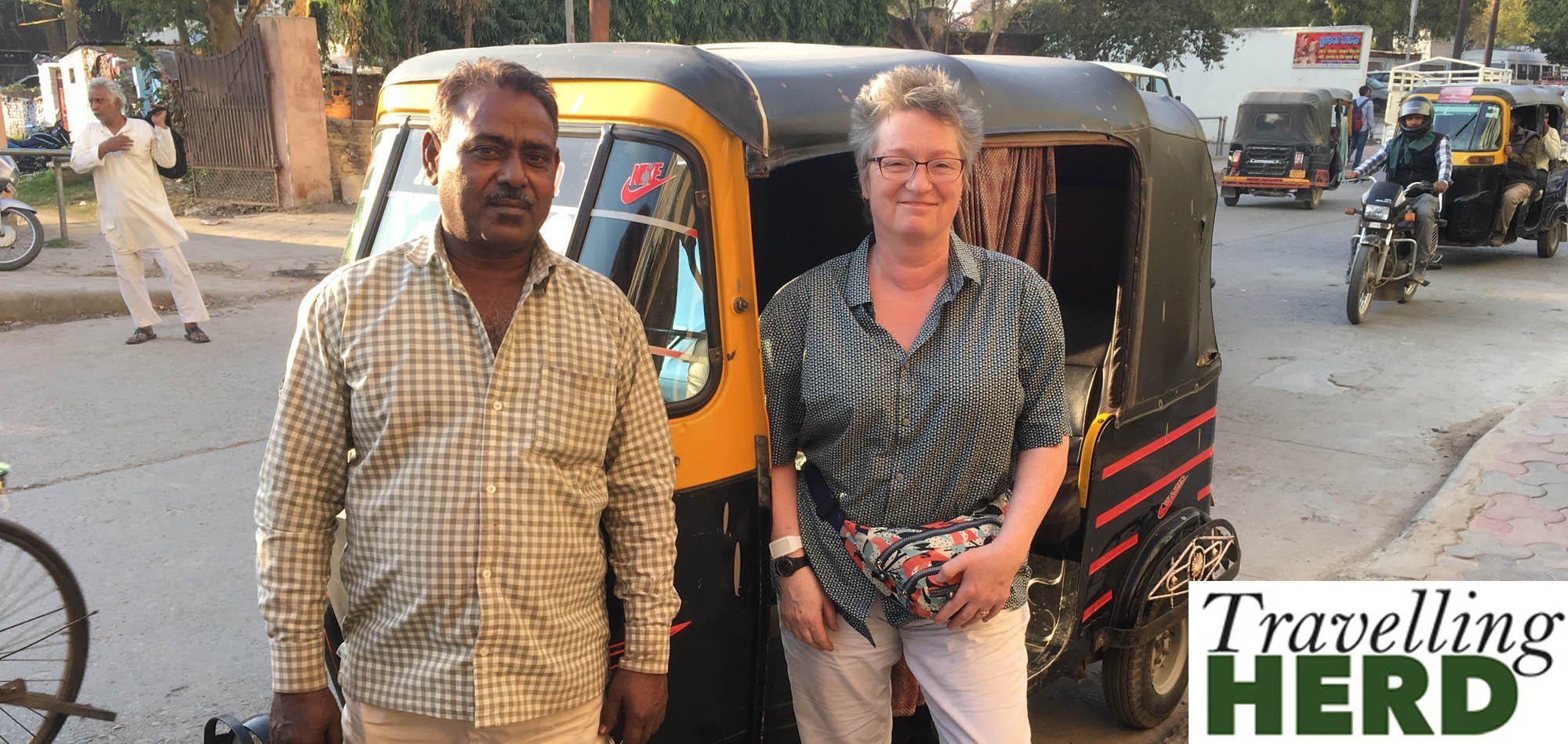
We duly set off towards Vishwanath Temple, only to be brought to a standstill by stationary traffic. We turned around and headed for Ramnagar Fort instead.

This was built by Kashi Naresh Maharajah Balwant Singh in the eighteenth century near the confluence of the River Ganges and the River Varuna. The kings of Varanasi have continued to live here and the current resident Pelhu Bhiru Singh is still apparently affectionately known as the Maharajah of Varanasi even though this royal title was abolished in 1971.
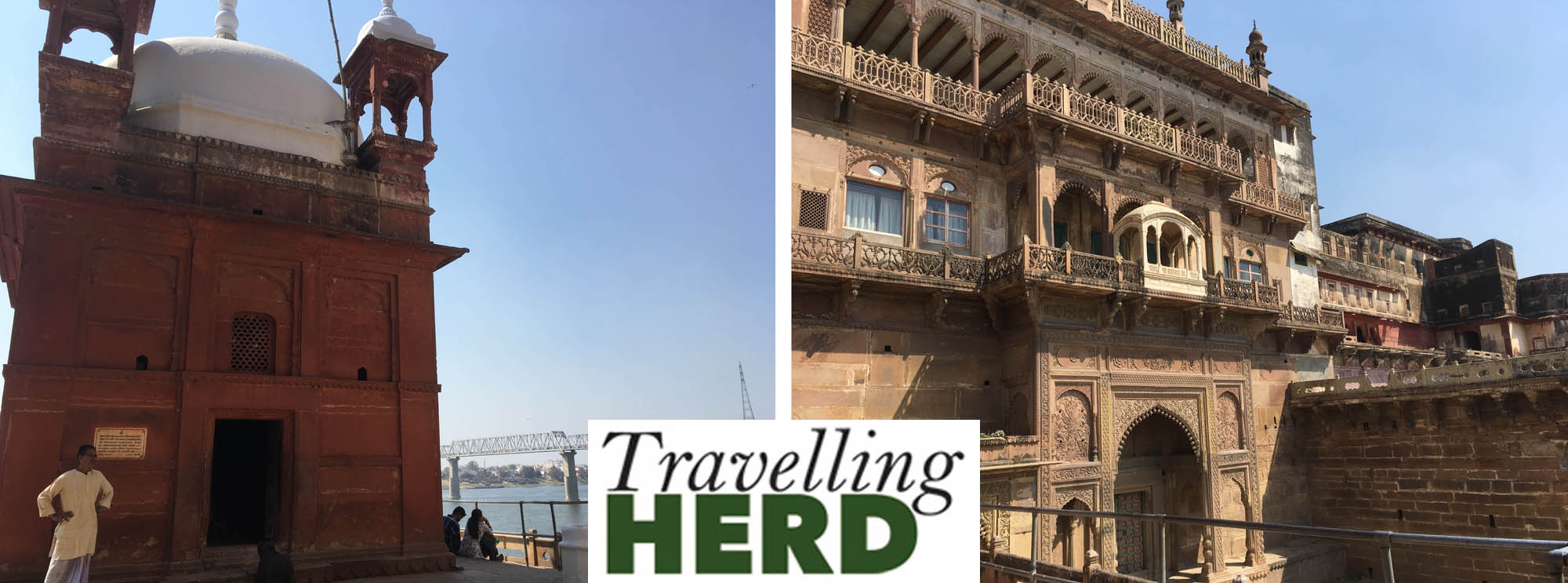
The residential areas of the fort are obviously not open to the public but there is a museum in the Durban Hall – previously used for public audiences – which features palanquins and elephant howdahs as well as American vintage cars, a range of weaponry and a rare astronomical clock.
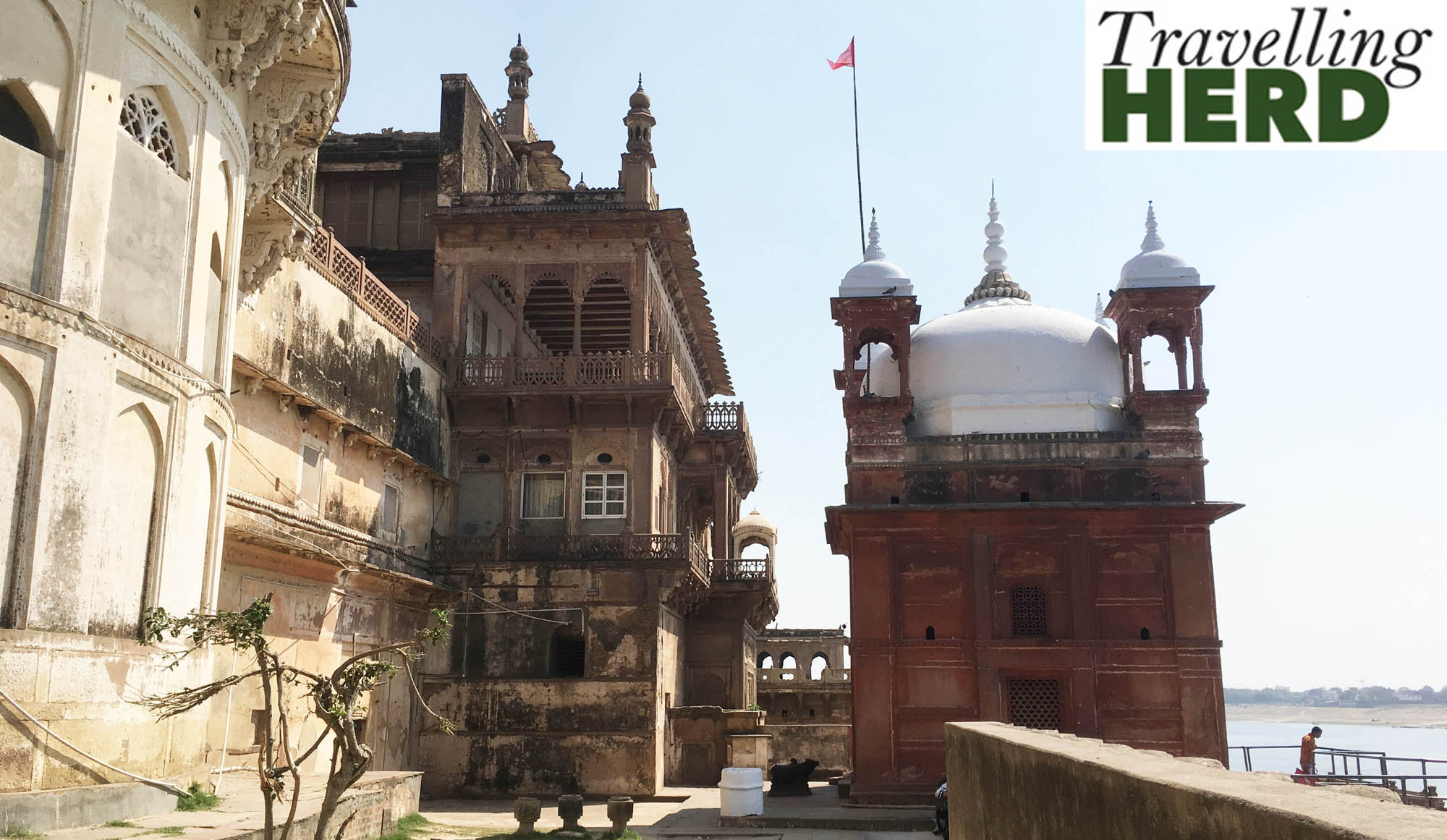
The Fort is in need of some TLC but it is easy to imagine it would have been magnificent in its heyday with working fountains and glorious views from the Vyas Temple across the river Ganges towards the Tulsi Ghat.
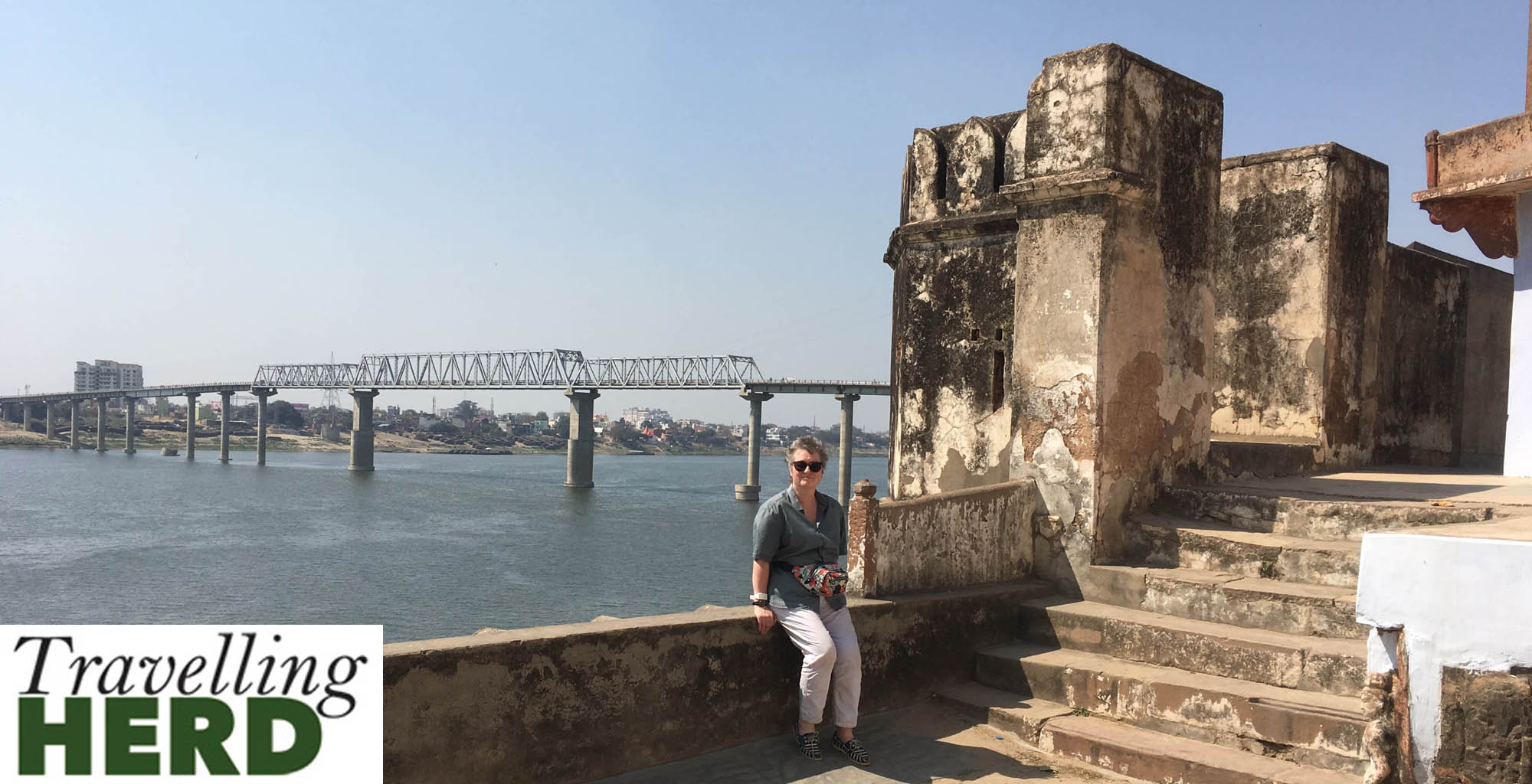
Whilst here, we also became celebrities briefly when a group of young Indian women asked to take selfies with us. Robert, of course, maintains it was because of his Hawaiian shirt but since they took one with Matilda first while he was still in the Vyas Temple, she feels she was really the main attraction. As a foreigner in parts of India you can be a real curiosity and you need to become accustomed to being stared, waved or pointed at. We seemed to be particularly unexpected as passengers in a tuk-tuk and in the traffic young people in particular would say hello and smile at us till we smiled back. In India, they also have a system of charging foreigners five to seven times the price for entry to museums and sights. But when you consider the wealth differential and that the average wage across the country is £3.00 a day [which will include technology entrepreneurs who are making western style wages] paying £1.50 instead of 20p is no big deal and we would like to think we are giving the economy a welcome boost.
When we returned from Ramnagar Fort to the tuk-tuk, it was fortunate that Robert had made a note of the driver’s name – Hashin Khan, written across the front screen – as Matilda had, typically, failed to make a note of any distinguishing features of the vehicle.
From here we headed towards the Vishwanath Temple, over a bridge with views back towards the Fort.
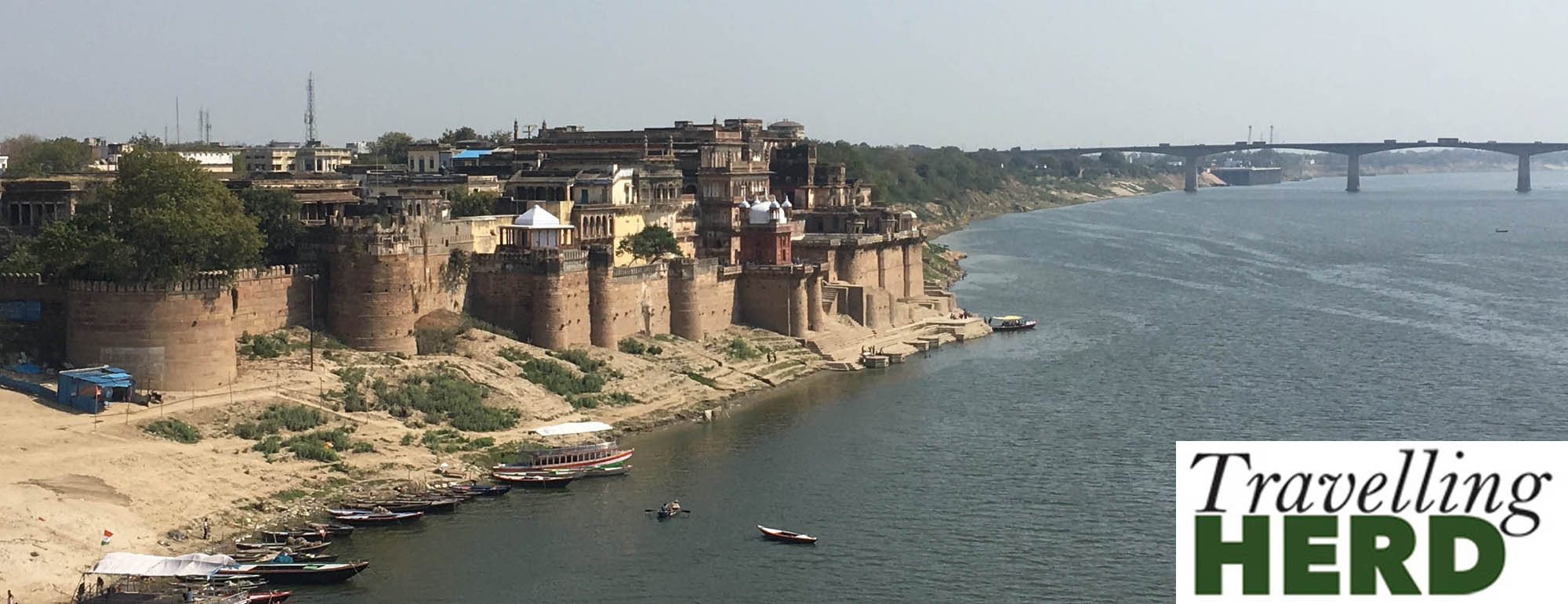
Vishwanath Temple was built in 1777 and has a roof topped with 1,645 lbs of gold. As we approached our destination the traffic became impenetratable even for our determined and enterprising driver.
It transpired that the Temple was closed for security checks in preparation for Prime Minister Modi’s visit the following day. We admitted defeat and headed towards Sarnath.
In the last blog we mentioned the dogs which are everywhere, but stranger to the Western eye is the number of cows in the centre of the cities which seem to have no owners. Some cattle are tethered by the side of the road but others walk down the streets or lie down in the road with their tails trailing into the path of the oncoming traffic which somehow manages to avoid them. Fortunately the cows seem to be very calm and placid as they are completely un-fazed by the noise of horns and traffic: stampeding cattle could cause serious mayhem.

On the way to Sarnath, we stopped at a level crossing to wait for a train to pass and we realised why they tend to travel very slowly when entering a station or passing a level crossing. After the barriers had come down, pedestrians, cyclists and motorcyclists alike ducked under the barrier, manhandled their vehicles underneath it with varying degrees of ease and continued to cross the rails as the train horn sounded repeatedly and increasingly loudly to announce its imminent arrival.
Hashin was very pleased to point out a bridge to us that was built by the British. He showed us a 10 rupee coin and said that every item of currency in India features a picture of this arch.
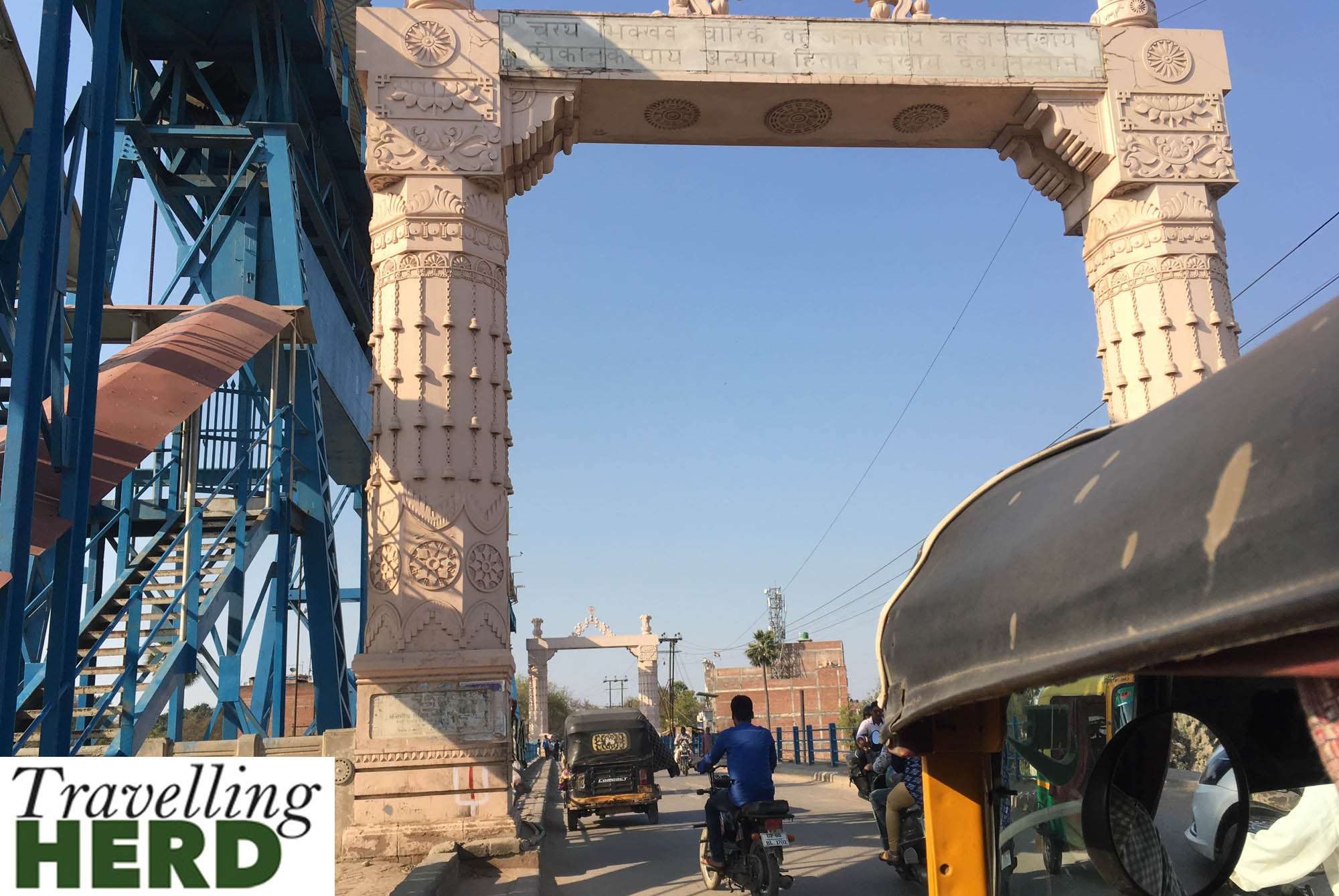
On researching this statement we have found out that every item of currency features three lions, the symbol of India. These lions featured on a pillar in Sarnath, which is no longer there, but was called the ‘Lion Capital, Ashokan Pillar at Sarnath’. It was one of 20 or so pillars built by the Mauryan king Ashoka during his reign from c. 268 to 232 BC. So Hashin was not the most accurate of guides.
Sarnath includes many important Buddhist sites built where Buddha is said to have preached the first sermon after his enlightenment. These include the Dhamekh Stupa [a stupa is a dome shaped building erected as Buddhist shrine] and . . .
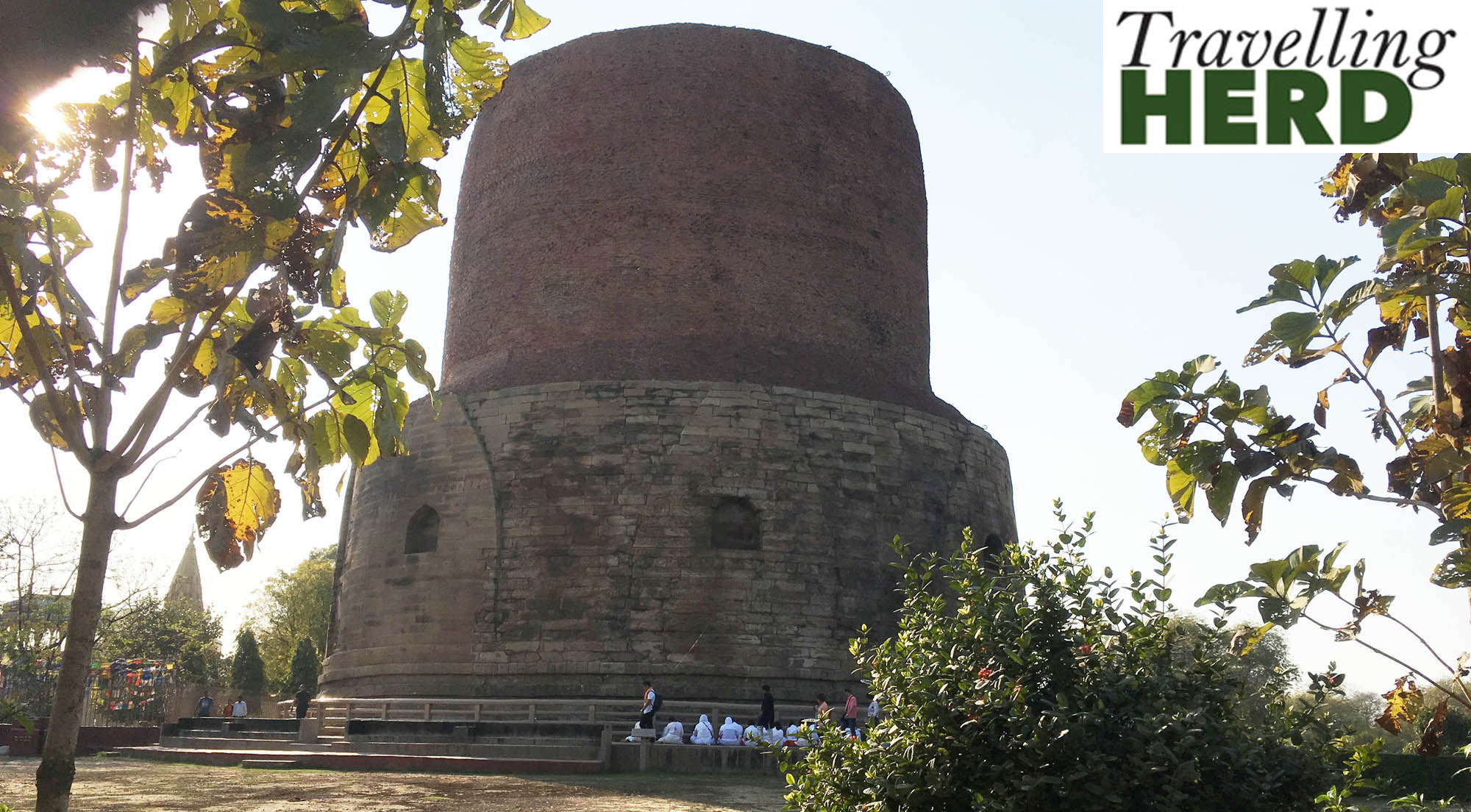
. . . the Mulagandha Kuty Vihara Buddhist temple, known as the birthplace of Buddhism.

There is also an 80 foot high statue of the standing Buddha and Buddhist temples in various national archeological styles. The complex has various monasteries and temples and the ruins of the Dharmrajika Stupa, which was built to contain the Buddha’s relics. Compared to the noise of the journey through traffic, this was a place for quiet, contemplation and calm.
We then returned to our hotel. This gave us the opportunity to connect to wifi and our daughters, check our PNR (Robert will explain PNRs later) and have a refreshing beer.
Later tonight at 22:25 we will catch our second overnight sleeper from Varanasi to New Jalpaiguri.
Video of the Day
Another sample of the manic bedlam of the Indian city traffic in Varanasi:
Current Route Map:






